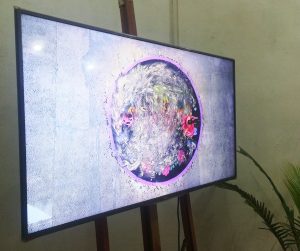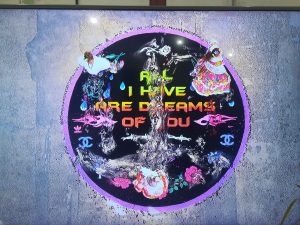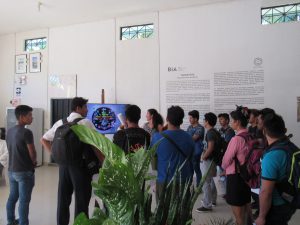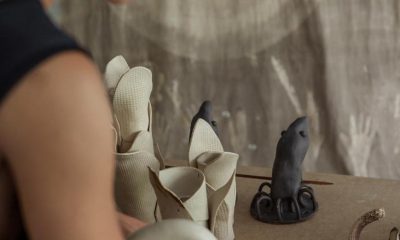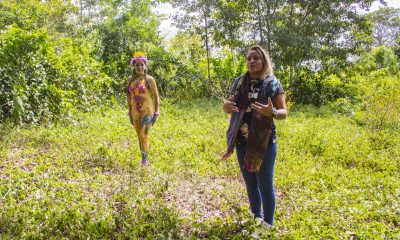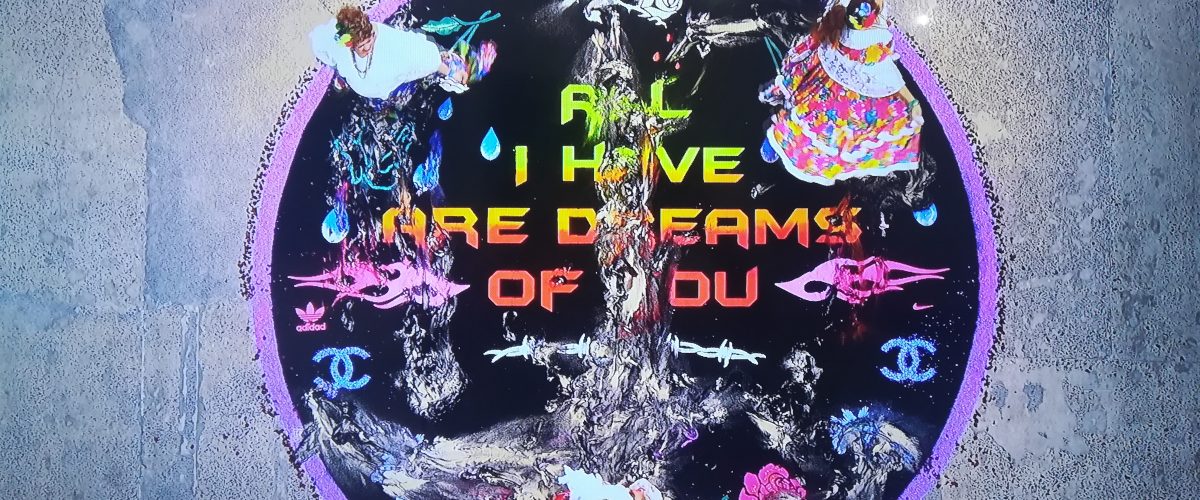
Artist Claudia Nicholson.
Exhition: Terrestrial, Recognize Yourself Human
Centro Selva Arte y Ciencia in the Bienal Internacional de Arte Amazónico, Pucallpa 2019.
Gallery Yankon Metsashoko.
text by curator Toby Chapman
Claudia Nicholson
Toby Chapman
Carriageworks
I just wanna hold you close
but so far all I have are dreams of you (1)
On 31 March 1995 the Tejano (2) singer Selena Quintanilla was shot and killed at the Days
Inn motel in Corpus Christi, Texas, by the president of her fan club. Within hours, fans of the
pop star began to descend on the motel to lay offerings and leave messages. Within days, a
number of memorials in the form of ofrendas, shrines and banners could be seen across the
city. And in the years to follow, Selena would be remembered through customised t-shirts,
(3) look-alike competitions, a feature film, (4) the namesake Disney star and musician, (5)
and, most recently, a line of MAC makeup.
Far from the Days Inn motel, Colombian-born Australian artist Claudia Nicholson has
invoked the life and legacy of Selena through a memorial in the form of an ephemeral
installation and series of performances. For Nicholson, Selena acts not only as a galvanising
figure within the Latin community, but her continued reference in pop culture suggests the
emergence of a kind of cultural identity that can be interpreted and reperformed across
geographical and temporal distances.
All I Have Are Dreams of You (2017) is a new installation and performance project by
Nicholson that expands upon many of the artist’s conceptual investigations, principally how
an experience of hybridity may be explored through traditional cultural practices. At the
centre of the work is Nicholson’s alfombra de aserrín (sawdust carpet). These ephemeral
works are traditionally created by Central and South American communities through a
process of layering dyed sawdust, often using stencils, to realise complex pictorial designs.
While the tradition has its origins in the celebration of Corpus Christi in Spain, the practice
was introduced to the Americas during the 16th and 17th centuries, and in the following
decades was adopted by Indigenous communities for its formal similarities to other forms,
such as the flower and fruit offerings of Mexico. Here, the alfombras became channels for the
transference of not only Spanish colonial inheritance but also Indigenous folkloric
knowledge.
Nicholson continues this logic in her own artwork, incorporating a wide range of imagery
from logos of counterfeit fashion labels to white roses and the lyrics of Selena’s song. It
becomes a palette across which marginalised and conflicting narratives coexist. Contributing
to the ongoing legacy of Selena, Nicholson’s memorial acts as a location for the artist to
forge relationships with the Latin American diaspora both locally and internationally through
a series of commemorative performances. But Nicholson’s project also illuminates the
geographical and cultural distances from her country of birth. While she has collaborated
with dancers and singers to choreograph the series of performances, in this instance the
creation of the carpet itself – usually a community action – is realised by the artist alone.
And for all the time that it takes Nicholson to create the carpet, in a moment it is destroyed;
transformed from creation to citation. All I Have Are Dreams of You marks a moment in the
historical trajectory of Selena. While on one level Nicholson creates a scenario where the
local Latin community can reflect on shared cultural experiences, the work also engenders a
mode of identification that can shift and adapt across global and local landscapes.
Notes
(1) Lyrics from the song ‘Dreaming of You’ (1995) by Selena.
(2) Since the 20th century, Tejano has been used to identify a Mexican–American resident of
South Texas.
(2) Worn by various celebrities including Drake, Lady Gaga, Kylie Jenner and Jay Z.
(3) Titled Selena, the 1997 film stars Jennifer Lopez.
(4) Selena Gomez.
